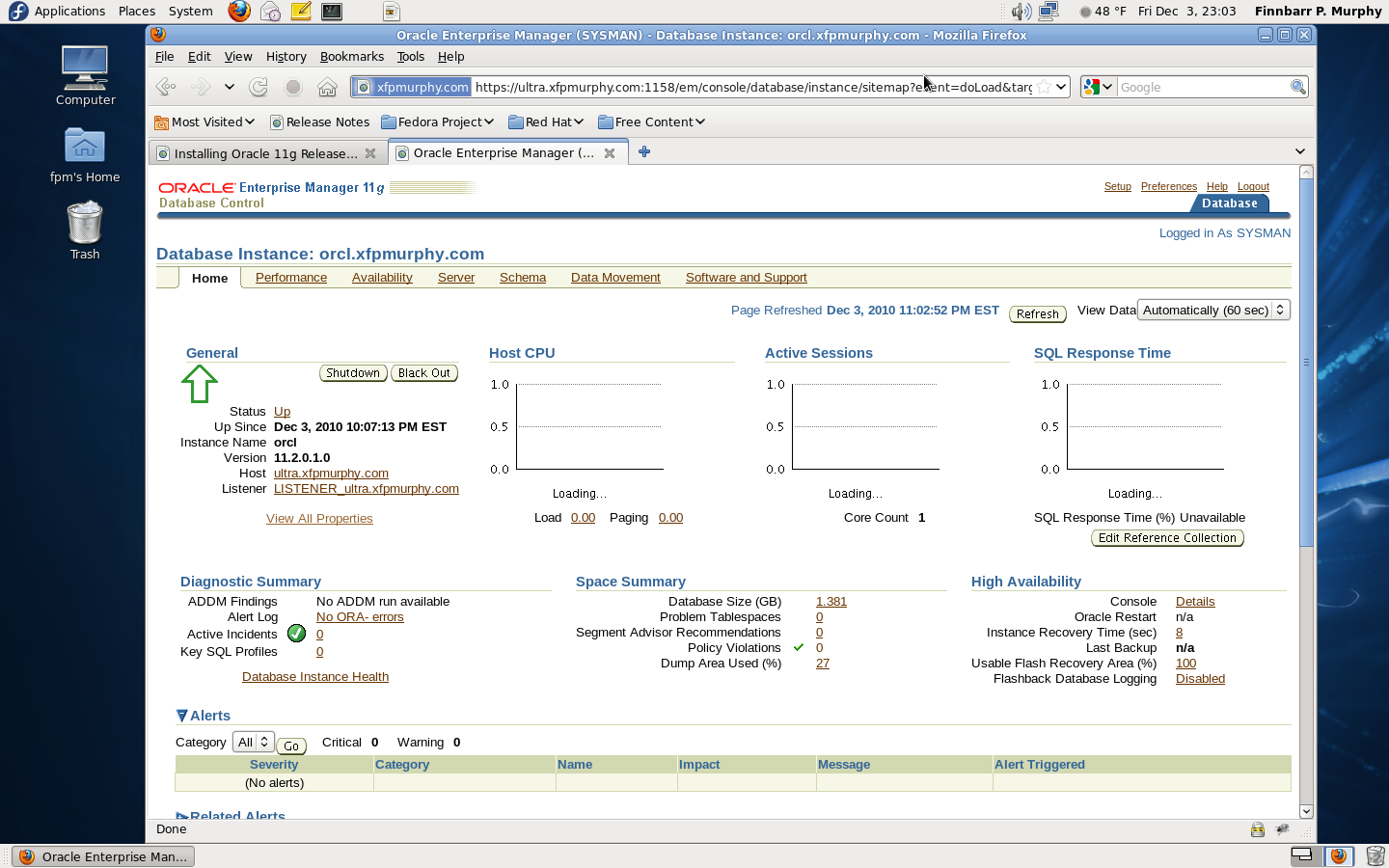Install Enterprise Manager Oracle 11g Linux

You have probably heard that Oracle released Enterprise Manager Cloud Control 13c on Friday. It’s the first product from Oracle with the number 13 in its release label. Installing Enterprise Manager. If you use Oracle Database 11g. $./emprereqkit -executionType install -prerequisiteXMLLoc $ORACLE_HOME/install.

I installed Oracle 11g on Red Hat Enterprise server 5.0. First time everything worked well. After creating dbora script file in /etc/init.d/ and setting all the oracle environmental variables I just restarted the server, then onwards Oracle Enterprise manager is not working I am not able to open EM on my browser. When I see, emctl status dbconsole - it shows bash-3. Aimp Skins Pack Sftng here. 00$ emctl status dbconsole Oracle Enterprise Manager 11g Database Control Release 11.1.0. Copyright (c) 1996, 2007 Oracle Corporation. All rights reserved. Oracle Enterprise Manager 11g is not running.
------------------------------------------------------------------ But the agent is running fine =>bash-3.00$ emctl status agent Oracle Enterprise Manager 11g Database Control Release 11.1.0. Copyright (c) 1996, 2007 Oracle Corporation. All rights reserved. This may or may not be related, but if your database is running from ASM, check that the cssd is running before you call start on your init-script - or rather make sure that your init script watches the process list and waits until it sees the process before doing anything. (CSSD is the daemon which controls the communication between the database instance and ASM instance).
[root@up-edia-db1 ~]# grep cssd /etc/inittab h1:35:respawn:/etc/init.d/init.cssd run >/dev/null 2>&1. Here are some log files that might help you troubleshoot this issue (from Metalink): • ORACLE_HOME/hostname_sid/sysman/log/emdb.nohup - contains the standard output from the Console main Java process at each start/exit (dbconsole and agent). It is appended with each new output of the Console main Java process.
• ORACLE_HOME/hostname_sid/sysman/log/emagent.log and emagent.trc - main agent log & trace files • ORACLE_HOME/hostname_sid/sysman/log/emoms.log and emoms.trc - main management service log & trace files • ORACLE_HOME/hostname_SID/sysman/log/emdctl.log and emdctl.trc - emctl log & trace files • ORACLE_HOME/hostname_SID/sysman/log/emagentfetchlet.trc and emagentfetchlet.log - log and trace file for Java Fetchlets Here's a on a similar issue. Also, no underscores should be in the hostname; you shouldn't be using DHCP; nslookup must resolve FQN and reverse lookup must work; IPV6 not yet supported.
Oracle Enterprise Manager Grid Control is a tool to manage and monitor multiple instances of Oracle and non-Oracle platforms such as Microsoft.NET, Microsoft SQL Server, NetApp Filers, BEA weblogic and others. I’ll show how to install Oracle Grid Control 11g on Oracle Linux (32bit). Here are the main steps: 1) Installation of Oracle Linux () 2) Installation of Oracle Database 11.2.0.2 (Repository Database) 3) Installation of Java and Weblogic Server (Middleware) 4) Installation of Grid Control 5) Installation of Grid Control Agent to a Target System Installation of Oracle Database 11.2 After you install Oracle Linux, login as root and create the directories for Grid Control and other software we’ll install. Unzip linux_11gR2_database_2of2.zip Unzip will create a directory named “database”, go into this directory and run “./runInstaller”: I’ll not set up MOS credentials now and will do a vanilla install. Uncheck the “I wish to receive security updates” and click next. Again, I select “skip software updates” and click next.
Select “create and configure a database”, click next. Select “server class”, it will allow us more options. Select “single instance” and click next.